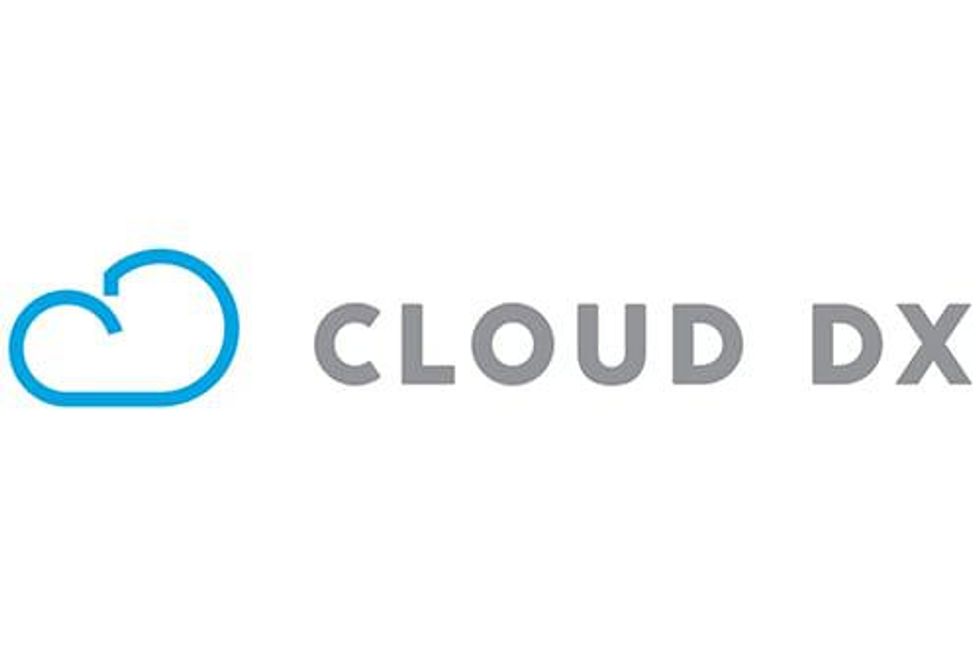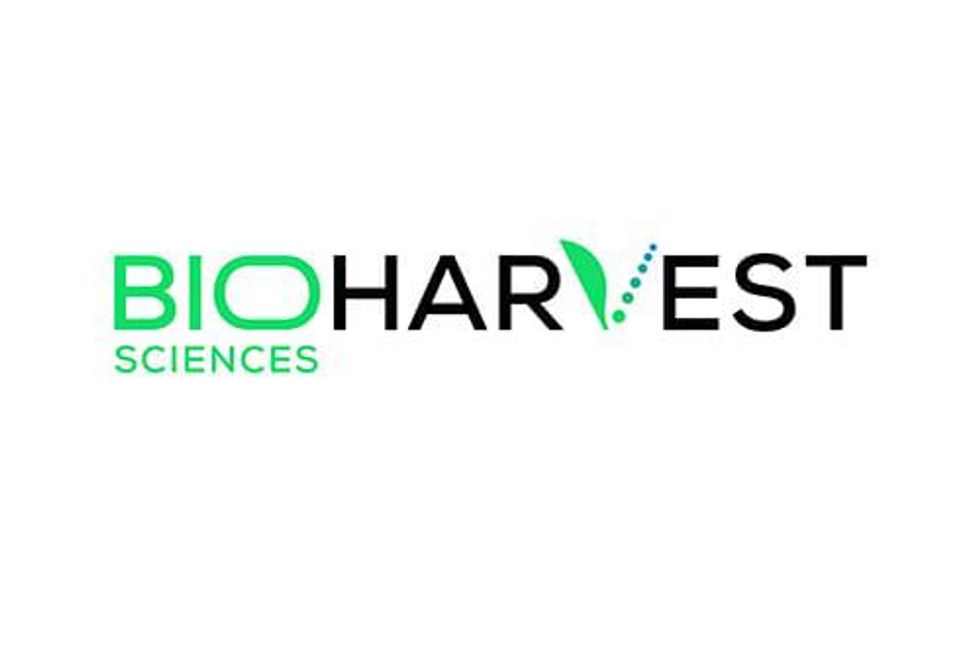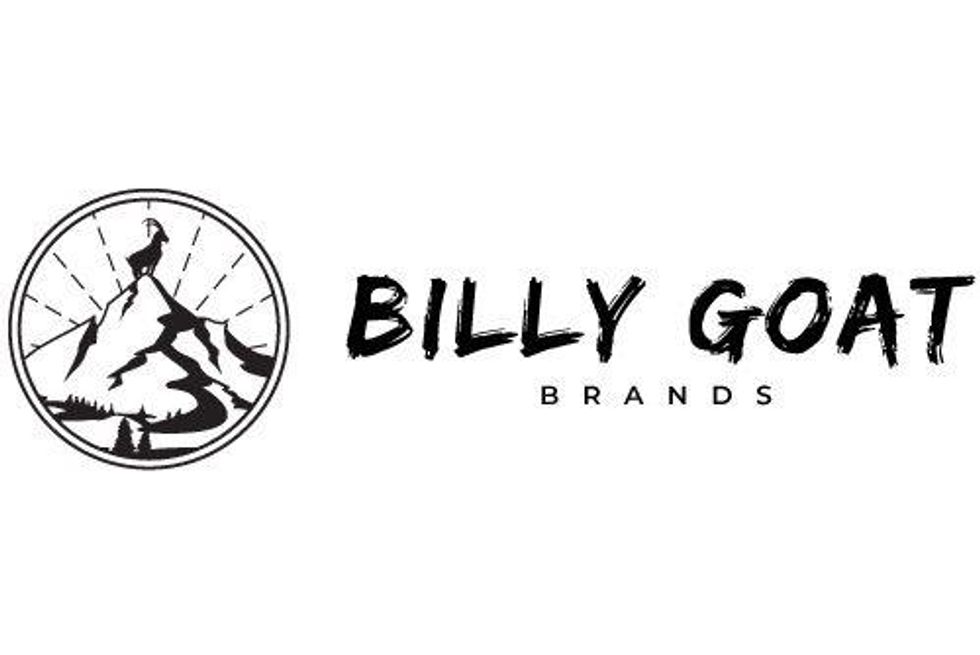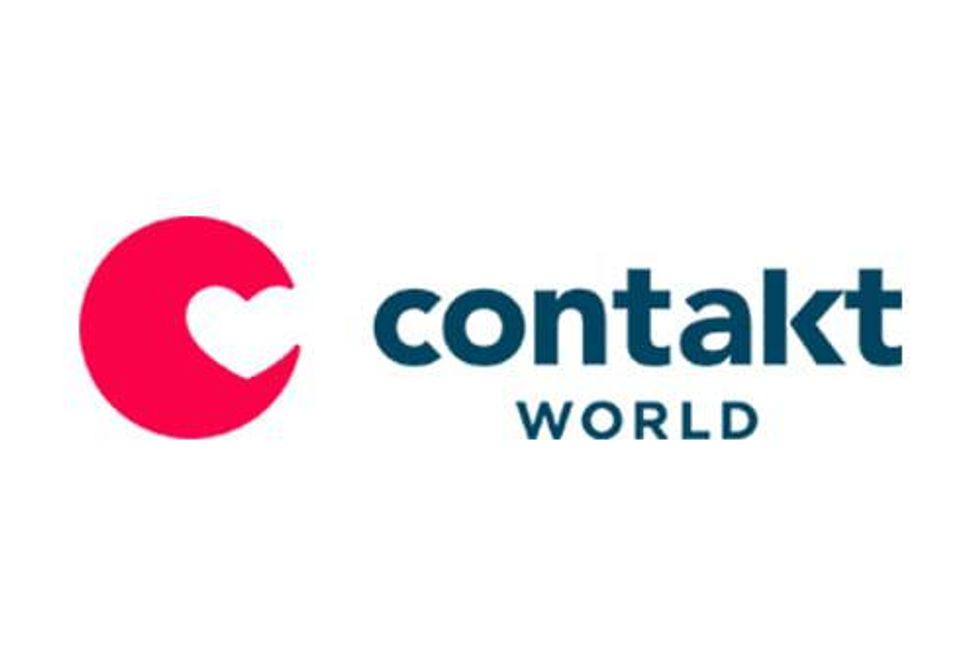Small-Cap Biotechs with Blockbuster Potential: Hugh Cleland
Canadian portfolio manager Hugh Cleland of BluMont Capital has chosen an interesting niche. He invests in stocks too small for mutual funds and major institutions, which allows him to get in on the ground floor and capture huge gains when the companies begin to mature. He actively participates in each company’s destiny, much like a venture capitalist. In this interview with The Life Sciences Report, Cleland discusses his “core four” and tosses in a handful of speculative tiny-cap companies that investors with enthusiasm for diligence should investigate.
Source: George S. Mack of The Life Sciences Report (6/27/13)
Canadian portfolio manager Hugh Cleland of BluMont Capital has chosen an interesting niche. He invests in stocks too small for mutual funds and major institutions, which allows him to get in on the ground floor and capture huge gains when the companies begin to mature. He actively participates in each company’s destiny, much like a venture capitalist. In this interview with The Life Sciences Report, Cleland discusses his “core four” and tosses in a handful of speculative tiny-cap companies that investors with enthusiasm for diligence should investigate.
The Life Sciences Report: You manage two funds at BluMont—the BluMont Northern Rivers Innovation RSP Fund and the BluMont Innovation PE Strategy (BIPES) Fund I. Describe these funds and their differences from a very high-up perspective.
Hugh Cleland: Both funds focus on the tech and healthcare sectors and invest in publicly traded small- and micro-cap companies, with a few private investments sprinkled in. The Innovation PE Strategy Fund takes a private equity approach to investing, meaning it is a six-year fund with no redemptions. In the latter half of the fund’s life, we distribute the proceeds of sales to our investors. But as far as our private equity approach, we are more hands-on, helping companies in a variety of ways, including working with existing management to ensure appropriate skill sets are represented on boards and in management, and helping to raise money and develop analyst coverage. I even sit on a few boards.
TLSR: The BIPES fund sounds more like venture capital (VC), no?
HC: It is a bit of a misnomer to call it private equity. It’s really VC—late-stage VC to be more precise.
TLSR: There are times in the life cycles of some public companies when you can actually buy them for less than you could have put them together as private equity. Is that the idea here?
HC: Absolutely. I often find that valuations in the publicly traded sub-$100 million ($100M) market cap world are lower than for comparable companies in the private world.
TLSR: How has your fund performance been last year and year-to-date?
HC: The BIPES Fund is up about 20% since inception, which was Jan. 31, 2011. We were doing much better than that at one point—up 50%—but then Neptune Technologies & Bioressources’ (NTB:TSX; NEPT:NASDAQ) production plant in Sherbrooke, Quebec, Canada, blew up on Nov. 8, 2012. Neptune was, and continues to be, one of my largest positions.
In addition, we’ve experienced a serious headwind with the unwinding of the resource bubble. The TSX Venture Exchange, where most of my companies are listed, is down almost 60% in the same two-and-a-half year period that the BIPES Fund has been in existence. The market environment has been one heck of a headwind for the stocks of companies in the fund.
TLSR: You don’t own resources, do you?
HC: I do not, but many investors who own speculative small-cap tech and healthcare companies in Canada have been overweight in the resource area for the last 5–10 years. As they have been watching their resource stocks fall by 50–90%, they seem to have been—understandably—panicking and often getting out of all their small-cap investments, including healthcare and technology investments.
TLSR: Go ahead with Neptune. Is it still a core position for you?
HC: Yes, it is. The company was on a very dramatic upward growth trajectory until last November, when the explosion occurred. It had just raised $35M to fund a significant plant expansion before that tragic event.
The company has now come forward with plans to get production going again. It is taking a different tack, with partnerships, joint ventures and outsourcing deals becoming an important part of its strategy. The company addressed the new strategy in its last conference call, and gave guidance that by Q1/14, it would have internal production capacity of about 150,000 kilograms (150kg) per year of its Neptune Krill Oil (NKO) product. The company has been talking to three different potential outsourcing partners and expects to make a decision on those by August. By the end of September, I believe that we’ll have visibility on how Neptune can have NKO production capacity in the 600K–1M kg/year range, but I don’t think the market has put that together yet. The market will be looking at this company in a much different way soon.
TLSR: I understand the company has received its first insurance payment from the accident. But if you look at the news flow from Neptune, it’s impossible not to see how many class-action lawsuits have been filed against it. This is a small company with a $182M market cap. How does it withstand such a legal assault?
HC: That was one of the pieces of very good news that came out in the company conference call on May 23. All of the suits have been dismissed. It’s over. There is no more risk from the lawsuits.
TLSR: Hugh, I know many people are familiar with krill oil, but explain to me briefly why it is better than fish oil as a cardiovascular agent.
HC: Krill is a small crustacean, not a fish. The phospholipid omega-3 oil derived from krill is increasingly being cited by many experts—both in the world of “pop health” and in the world of serious scientific work—as being superior to other sources of omega-3, including fish oil. Krill oil has four primary ingredients—eicosapentaenoic acid (EPA), docosahexaenoic acid (DHA), astaxanthin and phospholipids—compared to fish oil’s EPA and DHA. It appears that—similar to fish oil—krill oil has a very important lowering effect on triglycerides, but in contrast to fish oil, it also seems to lower low-density lipoprotein (LDL) and raise high-density lipoprotein (HDL). It is believed that the fact that the EPA and DHA in krill oil are chemically bonded to phospholipids is one of the primary reasons for the positive LDL and HDL effects. The astaxanthin is also bonded to the phospholipids. The fact that the EPA, DHA and astaxanthin in krill oil are all bonded to phospholipids makes them more bioavailable as they are metabolized in the body.
Acasti Pharma Inc. (ACST:NASDAQ; APO:TSX), Neptune’s pharmaceutical subsidiary, is one of my four largest holdings as well. We’ve been waiting for phase 2, open-label trial (NCT01516151) results for its drug candidate CaPre (a purified extract from krill oil). The company announced a few weeks ago that it finished enrolling the trial, and we expect to see results this summer. I expect the stock will have a nice run-up into those results. My expectation is that the results will demonstrate that Acasti has, at the very least, a best-in-class “fish oil drug” and may, in fact, be in possession of a blockbuster. I’m awaiting those results with some excitement and optimism. The market caps of both Neptune and Acasti are currently a fraction of where they will be if the trial results are good, and it’s been encouraging to see Acasti recently set new all-time highs on the TSX.V in Canada (it also trades on NASDAQ under the symbol ACST).
TLSR: You said the phase 2 trial with CaPre is open label. How do you get definitive, share-moving data from an open-label trial?
HC: There are actually two phase 2 trials underway right now, and the placebo-controlled double-blind phase 2 trial (NCT01455844) results are expected in Q1/14. But the open-label results are coming up shortly—likely in July.
It’s Dr. Harlan Waksal’s opinion that the open-label results will be significant enough to move the needle and will be sufficient to initiate discussions with big pharma on either partnering or a sale. Waksal was a co-founder of $7 billion ($7B) takeout ImClone Systems Inc., and today he is executive vice president for business and scientific affairs at Acasti. He also sits on the Neptune board.
I think part of the reason Dr. Waksal believes in the product is that there is a deep body of knowledge around omega-3s. The existence of this body of knowledge should mean that, if the open-label data are good enough, potential partners and investors won’t need to see the double-blind data before getting excited. Also, both of Acasti’s phase 2 trials have an unusually large number of patients (274 in the open-label trial and 429 in the placebo-controlled trial), which means there should be a higher degree of confidence than in most phase 2 trials. The bottom line is that—if the data are as good as I am expecting—the open-label study itself, in the context of the huge body of clinical data around fish oil, should be enough to catapult this stock to a whole new level.
TLSR: How much of Acasti does Neptune own?
HC: More than 60%.
TLSR: Even though Neptune owns more than 60% of Acasti, these stocks have not traded in sync. Over the last 12 months, Neptune is down 17%, while Acasti is up 37%. From my cursory view, it appears that Acasti does give some support to Neptune, which could have been hurt a lot more with these events.
HC: It’s the sum-of-the-parts underlying support to Neptune from Acasti. There were a few months after the explosion where investors could essentially get everything in Neptune—even part of Acasti—for free, meaning that for a short while Neptune’s market cap was lower than the value of its percentage ownership in Acasti. Some investors panicked out after the explosion. But for some sophisticated investors, it presented a great opportunity, and the stock is now up nicely from its December-January lows. Perceptive Advisors LLC, a very respected biotech investment group in New York City, is a 9.9% owner of Neptune. Perceptive Advisors has continued to be a key part of the shareholder base, and I think its circle has been among the buyers of the stock since the plant exploded. Perceptive Advisors clearly see the potential for dramatic gains in Neptune’s share price over the coming months and years.
TLSR: Go to your next idea.
HC: My funds own almost 13% of IntelGenx Corp. (IGXT:OTCQX; IGX:TSX.V). I cannot believe the stock is trading where it’s at, considering its achievements in the last 12 months. Its drug Forfivo (bupropion extended-release), for major depressive disorder, has been approved by the U.S. Food and Drug Administration (FDA). Forfivo is now being marketed by IntelGenx’s partner Edgemont Pharmaceuticals LLC (private).
In December 2011, a partnership with Par Pharmaceutical Companies Inc. (PRX:NYSE) was announced, and we’re expecting a regulatory filing for that drug sometime soon. The name of the drug and the details are confidential for competitive reasons. IntelGenx’s CEO has continued to emphasize the size and importance of this project without being specific.
If you look at a research report from Ram Selvaraju, who is head of equity research at Aegis Capital, you’ll see he hasn’t given this unnamed product any value whatsoever, but he still has a $3 target price on the stock, which is more than a 400% implied return from IntelGenx’s current price ($0.60). I’m expecting Ram will raise his target quite significantly after we see the filing for that undisclosed product. It should be a significant catalyst for the stock, as investors see what a large drug we’re dealing with.
Then there is the company’s thin-film rizatriptan migraine drug. This drug is being developed in partnership with RedHill Biopharma (RDHL:NASDAQ). The FDA accepted the new drug application(NDA) filing for this drug on June 18, and we now have Feb. 3, 2014, specified as the Prescription Drug User Fee Act (PDUFA) date.
Prescription migraine drugs have global sales of over $5B per year. Maxalt, the drug that IntelGenx has ported to a thin film, had sales of well over $600M in 2012, so this is not a small opportunity, although I get the sense that the Par project has significantly more upside.
Somehow, with this great pipeline and all this success, we are talking about a company with a market cap of $30M. A table-pounding buy, in my view.
TLSR: Why have IntelGenx’s shares been weak over the past month?
HC: It got hit fairly hard the last few days of May; a small overhang of warrants remains from a financing a few years ago. I expect that will get chewed through shortly, and we’ll have that cash on the balance sheet.
TLSR: Hugh, you’ve made a specialty in your professional career out of the 505(b)(2) regulatory pathway, haven’t you?
HC: Yes, I really like it. I’ll tell you about a second company utilizing the 505(b)(2) pathway: Cynapsus Therapeutics Inc. (CTH:TSX.V; CYNAF:OTCPK). It is another holding in my two funds. The company is developing a sublingual form of the injectable Parkinson’s disease drug apomorphine, which counters the debilitating “freeze-up” episodes common in Parkinson’s patients. It has made huge strides sinceyou and I spoke last November, including closing a financing of $7.3M, which greatly reduces the financing risk I have referenced. The company has also received funding from the Michael J. Fox Foundation. Have you seen the research initiation report from Senior Biotechnology Analyst Jason Napodano of Zacks Investment Research? It has everything in it.
TLSR: I’ve had one analyst tell me recently that the phase 1 bioequivalence study, for which results are expected in Q3/13, is going to be a needle-moving catalyst for Cynapsus stock. The study is in healthy volunteers, and the idea is to show that appropriate blood levels can be achieved with Cynapsus’ product, APL-130277 (sublingual apomorphine), a proposed rescue therapy for “off episodes” in Parkinson’s disease. We already know that apomorphine works for Parkinson’s patients if it gets into the bloodstream. Do you agree that the phase 1 results will be a catalyst?
HC: Yes. Bioequivalence studies are a key part of the 505(b)(2) pathway, and as such this phase 1 bioequivalence study will move the needle. It’s not going to be the biggest value creation milestone, but it’s an important milestone that—if successful—derisks the story and should create value in the shares.
TLSR: As you are well aware, this stock is up more than 25% just over the past few weeks, probably due in part to the Zacks initiation report on the company. Are there any other factors?
HC: The company raised money earlier this year, and it was very encouraging to see a specialty pharma company (Dexcel Pharma Ltd. [private]) as the lead investor, taking a 19.6% stake in Cynapsus and putting two directors on the board. But after that financing occurred, the shares were just drifting down on very little volume. The stock had, very frustratingly, drifted all the way down to $0.30/share. Then the Zacks report came out, and that has grabbed a lot of attention. The stock almost hit $0.50/share. I think that as more people become aware of the Zacks report, and as the company begins to hit its milestones, we’ll see the stock move into a sustainable uptrend.
The companies I have talked about so far are what I consider core positions, with Neptune, Acasti and IntelGenx each comprising more than 10% in the portfolios I manage, and Cynapsus being much smaller—more like 2.5%. What I will talk about now are either companies I am looking at and have not yet purchased for the two portfolios I run, or stocks that I have handled more as trading positions than as core positions thus far. My view on these stocks has been, and so far continues to be, that the risk is too high to treat them as core positions. But these stocks could represent, at least, opportunities for good trades over a 6- to 12-month time horizon. As always, investors need to do their own due diligence.
TLSR: Go ahead with another idea, please.
HC: I’ve locked in a good return on iCo Therapeutics (ICO:CVE), but I’m hopeful that phase 2 data for iCo-007, when released, will indicate strong potential for the drug candidate. Diabetic macular degeneration is the condition targeted by iCo-007, and the company just guided that the data will be out early in 2014. The study size is 208 patients, and some of the patients are being treated with a combination of iCo-007 + ranibizumab (Lucentis; Genentech, a unit of Roche Holding AG [RHHBY:OTCQX]) or laser photocoagulation.
TLSR: This stock has been weak. Are you still positive on this company?
HC: I am still positive on it, and I should mention that I do not believe that the decline in the stock is a reflection of a decreased likelihood of a successful phase 2 trial. The stock has been beaten up because, unfortunately, the company wasn’t able to come up with the nondilutive financing it expected from the JDRF (formerly the Juvenile Diabetes Research Foundation), and had to go back to the market to raise money to complete the phase 2 trial. If the results of the study are as good as the company expects, we will have a quite spectacular return from the current price. Biotech speculators should do well to accumulate a position over the summer and early fall.
TLSR: Do you have some other speculative ideas—food for thought—for investors who want to do some of their own research and digging?
HC: How about Bellus Health Inc. (BLU:TSX; BLUSF:OTCPK), which has a phase 3 asset but is trading below its cash per share, despite the fact that the company is fully funded to completion of the phase 3 study. The drug is Kiacta (eprodisate), a first-in-class proposed therapy for a terminal kidney condition known as AA amyloidosis.
The knock on this company is that the phase 3 trial won’t be fully enrolled until mid-2014, and the results won’t be out until 2017, so there would appear to be a lack of near-term catalysts. If Bellus is successful in the acquisition of Thallion Pharmaceuticals Inc. (TLM:TSX) (announced June 18), the catalyst problem will be somewhat solved, because Thallion is in the midst of a phase 2 trial with much nearer-term catalysts.
Apparently, the deal Bellus struck with Thallion actually nets Bellus $1M in cash, as well as the clinical assets, but I need to do more work to understand both the phase 3 asset and the new potential acquisition before I buy the stock for my funds. Bellus looks very interesting as a long-term value play; with the Thallion acquisition, if it goes through, there may be nearer-term catalysts that can move the stock, too.
A stock that I am revisiting after having made money on it in the past is Verisante Technology Inc. (VRS:TSX.V). Verisante, after years of development, has begun selling the Verisante Aura, a best-in-class noninvasive technology (based on Raman spectroscopy) to assist in detection of skin cancers. The Aura is approved for sale in Canada, Europe and Australia, and the company is pursuing additional approvals in Mexico and Brazil, as well as FDA approval. FDA approval should be a major catalyst for sales and for the stock.
A company that I’ve liked for a while is GeneNews (GNWSF:OTCPK; GEN:TSX), whose most immediate opportunity is with its blood test/screen for colorectal cancer, which doesn’t require stool sample collection. The underlying platform technology has numerous other diagnostic applications. The fact that David Sable, portfolio manager of Special Situations Fund in New York City, is on the GeneNews board gives me comfort that the technology is of significant value, and that the company will continue to move in the right direction.
Tekmira Pharmaceuticals Inc. (TKMR:NASDAQ; TKM:TSX) also has a platform technology and multiple shots on goal. The company uses lipid nanoparticle (LNP) technology to deliver siRNA (small interfering RNA) as well as other nucleic acids in the treatment of disease. Tekmira is developing its own RNA interference (RNAi) product candidates, including TKM-PLK1, which has completed an early-stage, first-in-humans phase 1 trial in neuroendocrine cancer.
Since its inception, Tekmira has fostered collaborative or partnership agreements with other companies in the RNAi field, including Alnylam Pharmaceuticals Inc. (ALNY:NASDAQ), Bristol-Myers Squibb Co. (BMY:NYSE), Takeda Pharmaceutical Co. Ltd. (TKPYY:OTCPK), and the U.S. government’s Transformational Medical Technologies (TMT) Program. Having made a very profitable trade in this company based on what turned out to be a correct view on the outcome of a lawsuit with Alnylam, I need to dig deeply into the Tekmira pipeline. The fact that Doug Loe of Byron Capital Markets in Toronto has afavorable view on this company is encouraging.
Isotechnika Pharma Inc. (ISA:TSX) is a $0.03 stock with a market cap of less than $6M. The company is taking its immunosuppressant compound ISA247 (voclosporin), which was originally developed for organ transplantation, and applying it to lupus. The reason I’m revisiting this stock is because Richard Glickman, formerly the CEO of Aspreva Pharmaceuticals Corp. (acquired by Galenica Group in October 2007 for $915M), is heavily involved in Isotechnika as it reconstitutes itself as a lupus drug company. I am revisiting it with an eye to participating in a recently announced financing.
TLSR: I look forward to speaking with you again in the future, Hugh.
HC: Thanks so much, George. It’s always a pleasure.
Hugh C. Cleland is an executive vice-president and portfolio manager at BluMont Capital Corp., based in Toronto, Canada. BluMont Capital acquired Northern Rivers Capital Management, which was co-founded by Cleland in May 2001, in January 2010. Cleland currently manages two funds for BluMont: the BluMont Northern Rivers Innovation RSP Fund and the BluMont Innovation PE Strategy Fund I, which takes a private equity approach to the management of publicly traded small- and micro-cap technology and healthcare stocks. Cleland worked at Interward Capital Corp. from 1998 to 2001, originally as an analyst and later as associate portfolio manager specializing in technology equities. In 1997–1998 he was research associate to the senior telecom services analyst at Midland Walwyn Inc. Cleland earned a bachelor’s degree with honors (1997) from Harvard University, and earned his CFA designation in 2001.
DISCLOSURE:
1) George S. Mack conducted this interview for The Life Sciences Report and provides services to The Life Sciences Report as an independent contractor. He or his family own shares of the following companies mentioned in this interview: None.
2) The following companies mentioned in the interview are sponsors of The Life Sciences Report:Cynapsus Therapeutics Inc., Verisante Technology Inc. Streetwise Reports does not accept stock in exchange for its services or as sponsorship payment.
3) Hugh Cleland: I personally and/or my family own shares of the following companies mentioned in this interview: Neptune Technologies & Bioressources, Acasti Pharma Inc., IntelGenx Technologies Corp. I personally am and/or my family is paid by the following companies mentioned in this interview: None. I was not paid by Streetwise Reports for participating in this interview. Comments and opinions expressed are my own comments and opinions. I had the opportunity to review the interview for accuracy as of the date of the interview and am responsible for the content of the interview.



